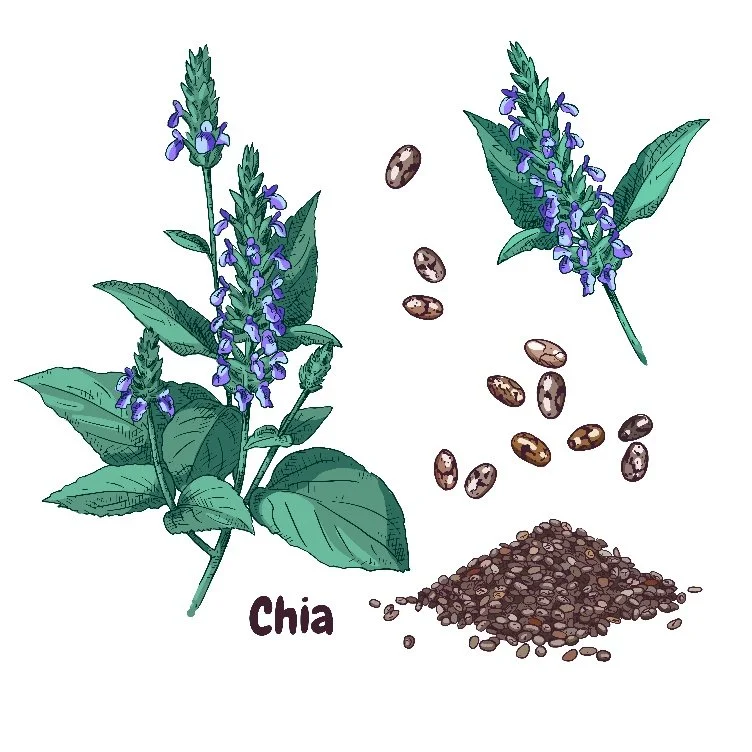Botanical Variety Among Seeds
Nature's Hearth Blog
Your Nourishing Kitchen
Select Your Favorite Farm Foods & Wild Harvest
&
Juice,
Blend,
Chop!
Making Meals with Traditional Foods
Adhering to the Principles of Holistic Health and WAPF Dietary Guidelines
Illustration by © Ira529 | Dreamstime.com
Botanical Variety Among Seeds
In nonflowering plants (gymnosperms), edible seeds are unenclosed, found on scales, leaves, cones, and cup-shaped structures. In flowering plants (angiosperms), edible seeds are within the flowers. Gymnosperms are pollinated by wind, water, and occasionally insects; whereas, angiosperms are pollinated by nectar-feeding insects, birds, and bats. When gymnosperms and angiosperms are pollinated, their ovules develop into seed embryos, creating new plant life.
Edible seeds, as the embryos of plants, take various forms, including: 1) nuts in shells, which are the seeds of trees; 2) grains in hulls, which are the seeds of grasses; and 3) legumes, peas, and beans in pods, which are of the Fabaceae or Leguminosae family. In flowering plants, edible seeds are embedded in fruit. Some fruits are single-seeded, such as apricots, peaches, and plums, while other fruits have many seeds, including grapes, kiwis, and watermelons. Lacking sweet taste, cucumbers, bell peppers, and summer and winter squash are multi-seeded fruits too. The seeds of herbaceous plants are especially small and have a tough seed coat, for example, anise, caraway, and chia seeds.
In nonflowering plants (gymnosperms), edible seeds are unenclosed, found on scales, leaves, cones, and cup-shaped structures. In flowering plants (angiosperms), edible seeds are within the flowers. Gymnosperms are pollinated by wind, water, and occasionally insects; whereas, angiosperms are pollinated by nectar-feeding insects, birds, and bats. When gymnosperms and angiosperms are pollinated, their ovules develop into seed embryos, creating new plant life.
Edible seeds, as the embryos of plants, take various forms, including: 1) nuts in shells, which are the seeds of trees; 2) grains in hulls, which are the seeds of grasses; and 3) legumes, peas, and beans in pods, which are of the Fabaceae or Leguminosae family. In flowering plants, edible seeds are embedded in fruit. Some fruits are single-seeded, such as apricots, peaches, and plums, while other fruits have many seeds, including grapes, kiwis, and watermelons. Lacking sweet taste, cucumbers, bell peppers, and summer and winter squash are multi-seeded fruits too. The seeds of herbaceous plants are especially small and have a tough seed coat, for example, anise, caraway, and chia seeds.
Amy Wing, Holistic Health Educator,
Nature’s Hearth
Website: www.naturesheart.net
Email: ajw.habitat@gmail.com
Nutrition In a Nutshell, LLC © 2011 - 2023. All Rights Reserved.
